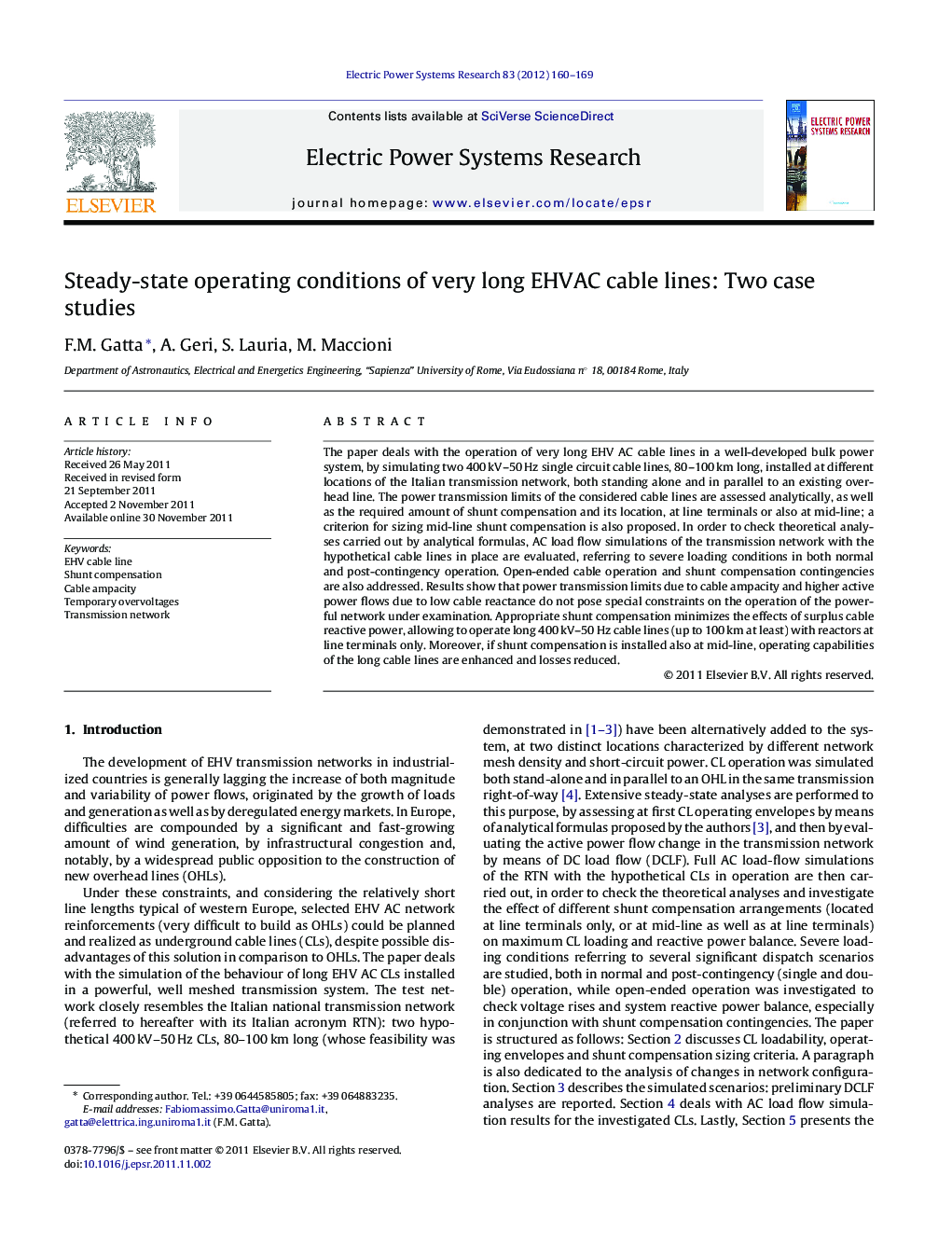| Article ID | Journal | Published Year | Pages | File Type |
|---|---|---|---|---|
| 705165 | Electric Power Systems Research | 2012 | 10 Pages |
The paper deals with the operation of very long EHV AC cable lines in a well-developed bulk power system, by simulating two 400 kV–50 Hz single circuit cable lines, 80–100 km long, installed at different locations of the Italian transmission network, both standing alone and in parallel to an existing overhead line. The power transmission limits of the considered cable lines are assessed analytically, as well as the required amount of shunt compensation and its location, at line terminals or also at mid-line; a criterion for sizing mid-line shunt compensation is also proposed. In order to check theoretical analyses carried out by analytical formulas, AC load flow simulations of the transmission network with the hypothetical cable lines in place are evaluated, referring to severe loading conditions in both normal and post-contingency operation. Open-ended cable operation and shunt compensation contingencies are also addressed. Results show that power transmission limits due to cable ampacity and higher active power flows due to low cable reactance do not pose special constraints on the operation of the powerful network under examination. Appropriate shunt compensation minimizes the effects of surplus cable reactive power, allowing to operate long 400 kV–50 Hz cable lines (up to 100 km at least) with reactors at line terminals only. Moreover, if shunt compensation is installed also at mid-line, operating capabilities of the long cable lines are enhanced and losses reduced.
► Use of 400 kV–50 Hz cables, 80–100 km long, is studied for the Italian network. ► Line-end and mid-line shunt compensation is sized and evaluated. ► Steady-state operation is feasible in both peak load and no-load conditions. ► Postcontingency power flows are also compatible with cable overloads. ► Line-end shunt compensation provides satisfactory performances.
